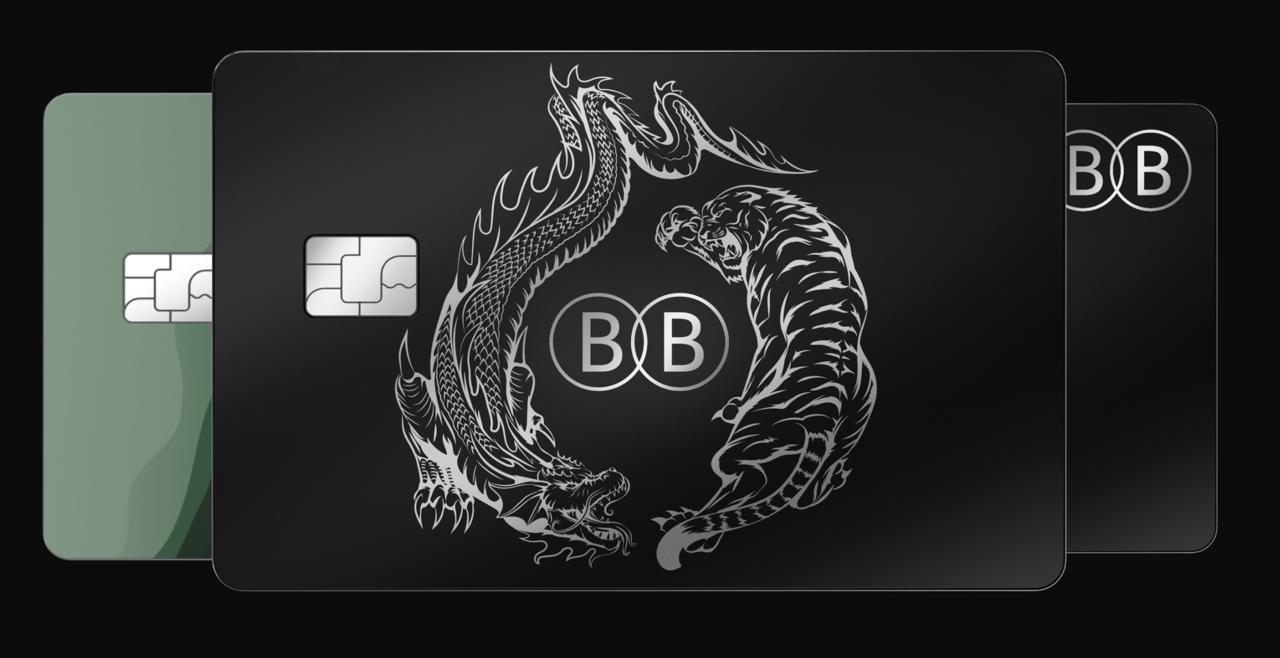Business
Stay ahead of innovation: TAMGA services and technologies

Over the past decade, digital technologies have significantly changed not only the landscape of the financial sector, but also everyone’s experience. It’s easy to assume that even more rapid development of the industry lies ahead. What to expect from the FinTech of the future and what technologies will drive the financial services market in the coming years, read in today’s article.
Biometric identification
Biometric identification technologies have long been an important part of IT solutions and a handy tool for a wide range of tasks in many industries. Currently, the global market for biometric systems actively uses technologies based on the recognition of fingerprints, faces, irises, voice, vein pattern, hand geometry and even DNA.
At the same time, according to FindBiometrics’ forecasts, the market for biometric identification systems will grow most actively in the commercial segment over the next 5-7 years, particularly in the financial industry, where biometric payments have already become common practice.
For example, in addition to classic fingerprint identification, the financial market is actively testing voice recognition systems. The online lending service Szybka Gotówka has not only introduced biometric identification of customers based on their faces, but also uses scoring based on customer behavior.
Big data
One of the important consequences of the era of total digitization is the digital footprint that almost all our activities leave on the network. As a consequence, the amount of information and data is growing exponentially, and processing them “classically” is becoming impossible. At this “stage”, Big Data technologies enter, which are able to handle the analysis of data arrays that are not susceptible to the methods of traditional analytics.
Basically, Big Data is a technology that allows processing and analysis of large amounts of different sets of information, both structured and unstructured. Artificial intelligence (AI) and machine learning algorithms are used for such analysis. One of the clearest examples of Big Data analysis in literally minutes is modern scoring. The Szybka Gotówka scoring system developed by TAMGA, based on Big Data and machine learning algorithms, analyzes a potential customer using more than 1,500 different parameters in a matter of minutes. In addition to credit history, data for the score is taken from social media, marketing channels and other public sources.
Big Data technology allows the system to process the massive amounts of data it receives in seconds. Machine learning, meanwhile, allows the scoring system to continuously improve, constantly improving the accuracy of a customer’s credit score.
Open Banking
It will not be an exaggeration to say that the historic regulation, which created the possibility for third parties to access a user’s banking data with their consent and became mandatory for European banks with the coming into force of the EU’s PSD2 (Payment Services 2) directive in 2016, ushered in a new financial era – the era of Open Banking.
As a result of the directive’s coming into force, banks, along with other market participants, now have the ability to provide access to their infrastructure through APIs (Application Programming Interfaces) to third parties such as FinTech companies, marketplaces, e-commerce or IT companies. In general, Open Banking will be trendy in the coming years, not only in the IT and financial segments, but in any business where quick funds turnover is important. However, it is traditionally the financial industry that is driving the spread of Open Banking.
For example, TAMGA’s online verification and transaction analysis service Wurmie uses a two-factor authentication method: API keys and IP whitelist in the process of user identification and credit risk analysis.
Baas
Another progressive technology that has had the greatest impact on user experience is BaaS (Banking as a Service). In practice, BaaS is the provision of banking services through third parties. Through APIs, companies outside the financial industry gain access to the financial infrastructure owned by banks, or FinTech, and provide services based on it. What this means for end users is that now you don’t have to switch between applications, but can meet all your financial needs in one comprehensive solution. A great example of the use of BaaS technology in practice is the online lending service Szybka Gotówka, which makes it possible not only to take out a microloan in a few minutes, but also, through API integration with third-party payment systems, to pay utilities directly in the application.
The technologies and services listed above are by no means a complete list of modern innovations. However, they are the foundation on which FinTech products of the near future will be built.
Business
High Volume, High Value: The Business Logic Behind Black Banx’s Growth

In fintech, success no longer hinges on legacy prestige or brick-and-mortar branches—it’s about speed, scale, and precision. Black Banx, under the leadership of founder and CEO Michael Gastauer, has exemplified this model, turning its high-volume approach into high-value results.
The company’s Q1 2025 performance tells the story: $1.6 billion in pre-tax profit, $4.3 billion in revenue, and 9 million new customers added, bringing its total customer base to 78 million across 180+ countries.
But behind the numbers lies a carefully calibrated business model built for exponential growth. Here’s how Black Banx’s strategy of scale is redefining what profitable banking looks like in the digital age.
Scaling at Speed: Why Volume Matters
Unlike traditional banks, which often focus on deepening relationships with a limited set of customers, Black Banx thrives on breadth and transactional frequency. Its digital infrastructure supports onboarding millions of users instantly, with zero physical presence required. Customers can open accounts within minutes and transact across 28 fiat currencies and 2 cryptocurrencies (Bitcoin and Ethereum) from anywhere in the world.
Each customer interaction—whether it’s a cross-border transfer, crypto exchange, or FX transaction—feeds directly into Black Banx’s revenue engine. At scale, these micro-interactions yield macro results.
Real-Time, Global Payments at the Core
One of Black Banx’s most powerful value propositions is real-time cross-border payments. By enabling instant fund transfers across currencies and countries, the platform removes the frictions associated with SWIFT-based systems and legacy banking networks.
This service, used by individuals and businesses alike, generates:
- Volume-based revenue from transaction fees
- Exchange spreads on currency conversion
- Premium service income from business clients managing international payroll or vendor payments
With operations in underserved regions like Africa, South Asia, and Latin America, Black Banx is not only increasing volume—it’s tapping into fast-growing financial ecosystems overlooked by legacy banks.
The Flywheel Effect of Crypto Integration
Crypto capabilities have added another dimension to the company’s high-volume model. As of Q1 2025, 20% of all Black Banx transactions involved cryptocurrency, including:
- Crypto-to-fiat and fiat-to-crypto exchanges
- Crypto deposits and withdrawals
- Payments using Bitcoin or Ethereum
The crypto integration attracts both retail users and blockchain-native businesses, enabling them to:
- Access traditional banking rails
- Convert assets seamlessly
- Operate with lower transaction fees than those found in standard financial systems
By being one of the few regulated platforms offering full banking and crypto support, Black Banx is monetizing the convergence of two financial worlds.
Optimized for Operational Efficiency
High volume is only profitable when costs are contained—and Black Banx has engineered its operations to be lean from day one. With a cost-to-income ratio of just 63% in Q1 2025, it operates significantly more efficiently than most global banks.
Key enablers of this cost efficiency include:
- AI-driven compliance and customer support
- Cloud-native architecture
- Automated onboarding and KYC processes
- Digital-only servicing without expensive physical infrastructure
The outcome is a platform that not only scales, but does so without sacrificing margin—each new customer contributes to profit rather than diluting it.
Business Clients: The Value Multiplier
While Black Banx’s massive customer base is largely consumer-driven, its business clients are high-value accelerators. From SMEs and startups to crypto firms and global freelancers, businesses use Black Banx for:
- International transactions
- Multi-currency payroll
- Crypto-fiat settlements
- Supplier payments and invoicing
These clients tend to:
- Transact more frequently
- Use a broader range of services
- Generate significantly higher revenue per user
Moreover, Black Banx’s API integrations and tailored enterprise solutions lock in these clients for the long term, reinforcing predictable and scalable growth.
Monetizing the Ecosystem, Not Just the Account
The genius of Black Banx’s model is that it monetizes not just accounts, but entire customer journeys. A user might:
- Onboard in minutes
- Deposit funds from a crypto wallet
- Exchange currencies
- Pay an overseas vendor
- Withdraw to a local bank account
Each of these actions touches a different monetization lever—FX spread, transaction fee, crypto conversion, or premium service charge. With 78 million customers doing variations of this at global scale, the cumulative financial impact becomes immense.
Strategic Expansion, Not Blind Growth
Unlike many fintechs that chase customer acquisition without a clear monetization path, Black Banx aligns its growth with strategic market opportunities. Its expansion into underbanked and high-demand markets ensures that:
- Customer acquisition costs stay low
- Services meet genuine needs (e.g., cross-border income, crypto access)
- Revenue per user grows over time
It’s not just about acquiring more customers—it’s about acquiring the right customers, in the right markets, with the right needs.
The Future Belongs to Scalable Banking
Black Banx’s ability to transform high-volume engagement into high-value profitability is more than just a fintech success—it’s a signal of what the future of banking looks like. In a world where agility, efficiency, and inclusion define competitive advantage, Black Banx has created a blueprint for digital banking dominance.
With $1.6 billion in quarterly profit, nearly 80 million users, and services that span the globe and the blockchain, the company is no longer just scaling—it’s compounding. Each new user, each transaction, and each feature builds upon the last.
This is not the story of a bank growing.
This is the story of a bank accelerating.
-

 Tech4 years ago
Tech4 years agoEffuel Reviews (2021) – Effuel ECO OBD2 Saves Fuel, and Reduce Gas Cost? Effuel Customer Reviews
-

 Tech6 years ago
Tech6 years agoBosch Power Tools India Launches ‘Cordless Matlab Bosch’ Campaign to Demonstrate the Power of Cordless
-

 Lifestyle6 years ago
Lifestyle6 years agoCatholic Cases App brings Church’s Moral Teachings to Androids and iPhones
-

 Lifestyle4 years ago
Lifestyle4 years agoEast Side Hype x Billionaire Boys Club. Hottest New Streetwear Releases in Utah.
-

 Tech7 years ago
Tech7 years agoCloud Buyers & Investors to Profit in the Future
-

 Lifestyle5 years ago
Lifestyle5 years agoThe Midas of Cosmetic Dermatology: Dr. Simon Ourian
-

 Health6 years ago
Health6 years agoCBDistillery Review: Is it a scam?
-

 Entertainment6 years ago
Entertainment6 years agoAvengers Endgame now Available on 123Movies for Download & Streaming for Free
